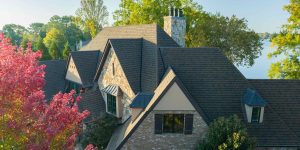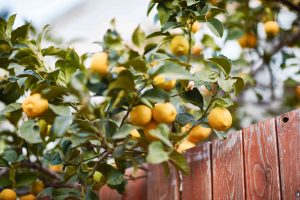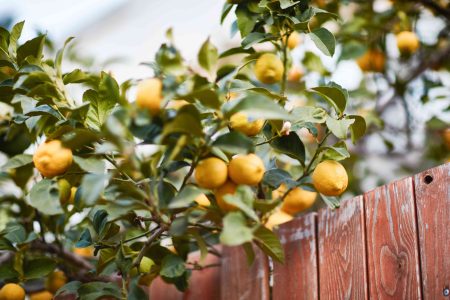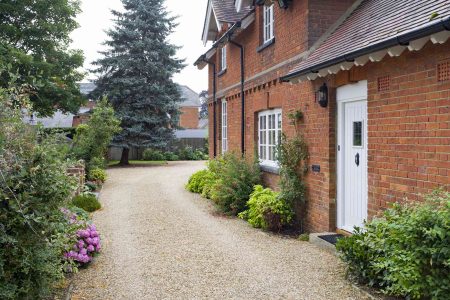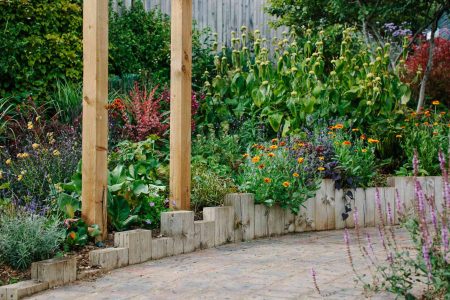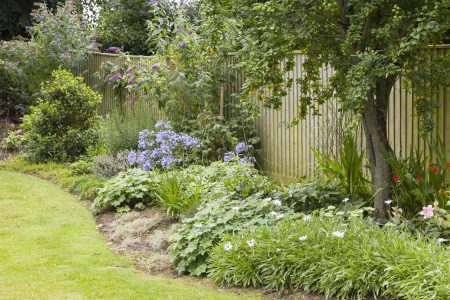Your front yard landscape is the welcome mat for your home, which is why it’s essential to select plants that complement your home, thrive in your climate, and suit your soil type.
Most of us appreciate easy-to-grow, low-maintenance plants whether they are annuals, perennials, shrubs, or grasses, and this is another important factor to consider for landscaping plants.
Here’s a roundup of 35 plants that are perfect for your front, side, or back yards.
Want more gardening tips? Sign up for our free gardening newsletter for our best-growing tips, troubleshooting hacks, and more!
-
01
of 35Boxwood
Boxwoods are commonly found in foundation plantings or hedges. For foundation plantings, look for dwarf varieties that are prized for their densely packed, light-green leaves and rounded, compact growth habit. The shrubs need little care once established except regular pruning to maintain their shape.
- Name: Boxwood (Buxus spp.)
- Light: Full, partial
- Growing Season: Evergreen
- Soil Needs: Loamy
- USDA Hardiness Zones: 5-9
-
02
of 35Liriope
Liriope is a grass-like flowering perennial plant that makes a tough, drought-tolerant ground cover or edging plant. A herbaceous flowering perennial in the asparagus family, it grows and spreads quite rapidly. Plants can be divided and planted in spring and summer.
- Name: Liriope, Lily turf (Liriope spp.)
- Light: Full, partial sun
- Growing Season: Spring, summer
- Soil Needs: Well-draining, sandy
- USDA Hardiness Zones: 4–10
-
03
of 35Hosta
With dozens of varieties, hostas (Hosta spp.) are a popular landscaping plant that thrives in shade and part-shade. These perennials are easy to care for and propagate. They should be planted in early spring or after summer heat in early fall. The plants emerge in early spring to bring color and texture to the landscape.
- Name: Hosta (Hosta spp.)
- Light: Shade, partial shade
- Growing Season: Spring, summer
- Soil Needs: Loamy, well-drained
- USDA Hardiness Zones: 3–9
-
04
of 35Azalea
Azaleas are shade-loving evergreen or deciduous blooming shrubs with white, purple, pink, orange, yellow, or red flowers in the spring. Best planted in the spring or early fall, growth rates vary by species, but most are relatively slow-growing.
- Name: Azalea (Rhododendron spp.)
- Light: Partial sun, dappled shade
- Growing Season: Evergreen, blooms in spring
- Soil Needs: Well-drained, acidic soil
- USDA Hardiness Zones: 6-8
Continue to 5 of 35 below -
05
of 35Rhododendron
There are thousands of rhododendron cultivars you can use as an evergreen foundation or specimen plant for front yard landscaping. The woody shrub is available in a wide range of sizes and flower colors. The bloom time ranges from late winter through early fall.
- Name: Rhododendron (Rhododendron spp.)
- Light: Shade to partial sun
- Growing Season: Evergreen, spring blooms
- Soil Needs: Moist, well-drained, acidic
- USDA Hardiness Zones: 4-9
-
06
of 35Blueberry
If you like the idea of producing fruit in your landscape, blueberry bushes are an easy-to-grow shrub for hedges or specimen plants. Look for a species that fits your garden plan because they can range from one to eight feet tall and two to 10 feet wide.
- Name: Blueberry (Vaccinium spp.)
- Light: Full sun
- Growing Season: Deciduous, spring blooms, summer fruit
- Soil Needs: Well-draining, acidic
- USDA Hardiness Zones: 3-9
-
07
of 35Caladium
Caladiums add a pop of color in shady garden borders or when planted in containers. This is a plant that does not overwinter in most growing zones, however, you can dig up the tubers in the fall, store them in a dry location at 70 to 75 °F, and replant them in the spring after the last chance of frost. Some selections will tolerate partial sun or early morning sunlight.
- Name: Caladium (Caladium)
- Light: Full to partial shade
- Growing Season: Summer
- Soil Needs: Well-draining, slightly acidic
- USDA Hardiness Zones: 9–11
-
08
of 35Dianthus
If you want to add some color to your landscape, dianthus is a great choice. Grown as annuals, biennials, or evergreen perennials depending on your hardiness zone, the flowers are fragrant in shades of pink, purple, or white with a fringed or frilly edge. Dianthus is deer-resistant but will be eaten by rabbits.
- Name: Dianthus, Pinks (Dianthus)
- Light: Full sun
- Growing Season: Spring, summer
- Soil Needs: Moist but well-drained
- USDA Hardiness Zones: 4-9
Continue to 9 of 35 below -
09
of 35Zinnia
For a pop of color in the landscape, zinnias are the perfect plant. Easy to grow from seed, they bloom from late spring until fall in nearly every color.
Zinnia comes in various shapes, including beehive, button, and cactus. Depending on the variety, zinnias can be used as a front or the back border or in containers. Zinnia is deer and rabbit-resistant and attracts butterflies, hummingbirds, and songbirds.
- Name: Zinnia (Zinnia)
- Light: Full sun
- Growing Season: Summer
- Soil Needs: Clay, sand, loam
- USDA Hardiness Zones: 3-10
-
10
of 35Indian Hawthorn
Indian hawthorn is a small, rounded evergreen shrub with leathery leaves, showy spring flowers, and purple-black winter fruit. Drought-tolerant and shallow-rooted, it works well as a foundation plant.
- Name: Indian hawthorn (Rhaphiolepis x delacourii)
- Light: Full sun to partial shade
- Growing Season: Evergreen, spring bloom
- Soil Needs: Clay, loam
- USDA Hardiness Zones: 7a-10b
-
11
of 35Chinese Fringe Flower
Chinese fringe flower is a broad-leaved evergreen shrub that works well as a taller shrub on house corners, between windows, or as a hedge. Full-size and dwarf varieties are available with lightly scented white, pink, or red flowers that appear from late March to April.
- Name: Chinese fringe flower (Loropetalum chinense)
- Light: Full sun, partial shade
- Growing Season: Evergreen, spring bloom
- Soil Needs: Acidic
- USDA Hardiness Zones: 7b-9b
-
12
of 35Muhly Grass
A showy drought-tolerant native grass, Muhly grass has clouds of tiny flowers that form a pinkish-purple or white haze that appears in October and fades to tan through the winter. Clumps of very fine, blue-green to gray-green foliage rise to 2 to 3 feet tall in the spring.
- Name: Muhly Grass or Hairgrass (Muhlenbergia capillaris)
- Light: Full sun
- Growing Season: Summer, year-round interest
- Soil Needs: Clay, loam, sand
- USDA Hardiness Zones: 5a-9b
Continue to 13 of 35 below -
13
of 35Japanese Forest Grass
A shade-loving, deciduous perennial grass, Japanese Forest Grass forms dense, cascading mounds. Cultivars range from deep green to golden yellow to green and white variegated foliage.
- Name: Japanese Forest Grass (Hakonechola macra)
- Light: Shade
- Growing Season: Summer
- Soil Needs: Acidic, well-draining
- USDA Hardiness Zones: 5-9
-
14
of 35Mexican Feather Grass
The exceptionally fine textured evergreen leaves of this grass grow in a weeping mound to soften hardscape features in the landscape. Growing several plants in a line is especially effective for forming a border. The delicate flower spikes appear in summer and the silvery green to lime-green leaves make it a good backdrop for darker plants.
- Name: Mexican Feather Grass (Nessella tenuissima)
- Light: Full sun
- Growing Season: Evergreen, summer interest
- Soil Needs: Dry soil
- USDA Hardiness Zones: 5-10
-
15
of 35Switchgrass
This beautiful native grass has many cultivars with showy flowers, excellent fall color, and winter interest. Small, teardrop-shaped flower seeds with purplish-reddish tips appear in the summer. The grass turns to shades of yellow in the fall and lightens further in the winter.
- Name: Switchgrass (Panicum virgatum)
- Light: Full sun
- Growing Season: Summer, year-round interest
- Soil Needs: Moist soil but drought-tolerant
- USDA Hardiness Zones: 5-9
-
16
of 35Fountain Grass
Beautiful, cream to pink, bottlebrush-shaped flower heads appear from mid to late summer above fine, arching mounded foliage 3 to 4 feet tall. Some cultivars are dwarf varieties with striking color variations.
- Name: Fountain Grass (Pennisetum alopecuroides)
- Light: Full sun
- Growing Season: Summer, year-round interest
- Soil Needs: Moist, well-draining
- USDA Hardiness Zones: 5-9
Continue to 17 of 35 below -
17
of 35Daphne
Winter or fragrant daphne is a small shrub that produces small, highly perfumed flowers in mid-to-late winter when nothing else is blooming. It does not like wet roots so plant in an area with good drainage like under the eaves of a home near the entrances so everyone can enjoy the wonderful fragrance.
- Name: Winter daphne (Daphne odora)
- Light: Full sun to partial shade
- Growing Season: Evergreen, late winter bloom
- Soil Needs: Neutral, loamy
- USDA Hardiness Zones: 7a-9b
-
18
of 35David Viburnum (Viburnum davidii)
A small evergreen viburnum, it has glossy, dark leaves and small white flowers that appear in the spring. Small turquoise-blue fruit appear in the winter for year-round interest.
- Name: David Viburnum (Viburnum davidii)
- Light: Partial sun
- Growing Season: Evergreen
- Soil Needs: Neutral, well-draining
- USDA Hardiness Zones: 7b–9a
-
19
of 35Snowball Bush
A tall-growing viburnum, the snowball bush produces white flowers in large round clusters in the spring and scarlet fruit in the winter. This multi-stemmed plant looks very similar to the hydrangea, but it’s larger with deeply-veined leaves.
- Name: Snowball bush (Viburnum x macrocephalum)
- Light: Full sun, partial shade
- Growing Season: Deciduous, spring bloom
- Soil Needs: Well-draining
- USDA Hardiness Zones: 6-9
-
20
of 35Arrowwood Viburnum
Arrowwood viburnum is a deciduous flowering shrub with showy white flowers in spring and blue-black fruits that appear after the flowers fade. A good choice for border plantings, hedges, and screens.
- Name: Arrowwood viburnum (Viburnum dentatum)
- Light: Full sun, partial shade
- Growing Season: Deciduous, spring bloom, winter fruit
- Soil Needs: Moist, well-draining
- USDA Hardiness Zones: 2a-8b
Continue to 21 of 35 below -
21
of 35Yew
There are many cultivars of yew with some that can grow nearly 60 feet tall. For landscaping the front yard, the American or Canadian yew rarely grows over 5 feet as a foundation or specimen plant.
- Name: American yew (Taxus canadensis)
- Light: Partial to full shade
- Growing Season: Evergreen
- Soil Needs: Clay, loam
- USDA Hardiness Zones: 3a-7b
-
22
of 35Bar Harbor Juniper
Bar harbor juniper is a slow-growing, low plant that works well in front of taller shrubs in front of a house. It tolerates hot weather, full sun, and all types of soils. The blue-green foliage is a welcome contrast to many home colors.
- Name: Bar Harbor juniper (Juniperus horizontalis ‘Bar Harbor’)
- Light: Full sun
- Growing Season: Evergreen, blue winter fruit
- Soil Needs: Good drainage
- USDA Hardiness Zones: 4b-9b
-
23
of 35Glossy Abelia
Glossy abelia is a medium-sized, multi-stemmed, hybrid shrub with numerous cultivars presenting various foliage variations. Glossy abelia is easy to grow and has a very long blooming season attracting butterflies, and hummingbirds.
- Name: Glossy abelia (Linnaea x grandiflora)
- Light: Full sun, partial shade
- Growing Season: Spring flowering
- Soil Needs: Well-draining
- USDA Hardiness Zones: 6a-9b
-
24
of 35Skyrocket Juniper
The Skyrocket Juniper is a slow-growing conifer with reddish-brown bark that sheds in thin strips and silvery-blue to dark green foliage. Perfect as an accent plant, the cones are waxy blue and berry-like and are enjoyed by birds and small mammals.
- Name: Skyrocket Juniper (Juniperus scopulorum)
- Light: Full sun
- Growing Season: Evergreen
- Soil Needs: Loam, sand, rocky, well-drained
- USDA Hardiness Zones: 3a-7b
Continue to 25 of 35 below -
25
of 35Hydrangea
Hydrangeas are favored for their variety of flower colors and appearances. Some bloom in large, round clusters and others have a smaller, flatter appearance. Hydrangea species tend to do quite well in partial shade under tall deciduous trees.
- Name: Hydrangea (Hydrangea spp.)
- Light: Full sun, partial shade
- Growing Season: Summer flowers, deciduous
- Soil Needs: Moist, well-drained
- USDA Hardiness Zones: 5-9
-
26
of 35Impatiens
With their brightly colored blooms in a multitude of hues, impatiens make a pop of color in shady areas. There are dozens of species in this annual genus, but most remain under one foot tall flowering in spring and summer.
- Name: Impatiens (Impatiens spp.)
- Light: Shade, filtered shade
- Growing Season: Spring and summer bloom
- Soil Needs: Well-draining
- USDA Hardiness Zones: 10-11
-
27
of 35Bleeding Heart
Common bleeding heart is a spring-blooming herbaceous perennial with arching stems. Bleeding heart flowers are small and heart-shaped in pink or white that sparkle in shaded areas.
- Name: Bleeding heart (Lamprocapnos spectabilis)
- Light: Partial to full shade
- Growing Season: Spring blooming perennial
- Soil Needs: Clay, loam
- USDA Hardiness Zones: 3a-9b
-
28
of 35Lily of the Valley
Lily of the valley makes an effective ground cover in shady areas, planted under shrubs, in the fronts of beds, or rock gardens. The plant resists erosion so can be planted along a slope. The highly fragrant flowers make an excellent addition to bouquets.
- Name: Lily of the Valley (Convallaria majalis)
- Light: Full to partial shade
- Growing Season: Perennial with spring bloom
- Soil Needs: Clay, loam, rocky
- USDA Hardiness Zones: 3a-7b
Continue to 29 of 35 below -
29
of 35Hellebore
Hellebores are among the earliest perennial flowers to bloom, welcoming spring with their rose-like blossoms. Hellebore foliage is evergreen and forms a low-lying clump with leaves that are lobed and palm-like.
- Name: Hellebore (Helleborus spp.)
- Light: Full to partial shade
- Growing Season: Early spring bloom
- Soil Needs: Moist but well-draining
- USDA Hardiness Zones: 3-9
-
30
of 35Daylily
Daylilies come in dozens of varieties and colors. When planted in a mass bed, these sun-loving perennials can provide blooms that last for weeks. They are drought and heat-tolerant and have very few pests.
- Name: Daylily (Hemerocallis spp.)
- Light: Full sun
- Growing Season: Spring, summer, and fall flowering
- Soil Needs: Acidic soil
- USDA Hardiness Zones: 3-10
-
31
of 35Nandina
Nandina, or heavenly bamboo, is an evergreen shrub that flowers in the late spring and has ornamental fruits in the fall that last through the winter months. The new growth is reddish, and some cultivars (Firepower) have brilliant fall foliage.
- Name: Nandina (Nandina domestica)
- Light: Full sun to partial shade
- Growing Season: Evergreen, spring flowers, winter fruit
- Soil Needs: Clay, loam, sand
- USDA Hardiness Zones: 6a-9b
-
32
of 35Peony
These clump-forming, shrub-like perennial plants have enormous, highly fragrant flowers that appear in late spring and early summer. The colors range from white to pink, purple to red, and yellow to coral, and are most effective when planted in a mass bed.
- Name: Chinese peony (Paeonia lactiflora)
- Light: Full to partial sun
- Growing Season: Late spring blooming perennial
- Soil Needs: Sandy, loamy
- USDA Hardiness Zones: 3a-8a
Continue to 33 of 35 below -
33
of 35Bottlebrush Buckeye
Bottlebrush buckeye does best in full sun but can tolerate partial or full shade. It has a long bloom time of showy, white, feathery panicles for weeks, and the foliage adds fall interest.
- Name: Bottlebrush buckeye (Aesculus parviflora)
- Light: Full sun to full shade
- Growing Season: Deciduous with early summer bloom
- Soil Needs: Acidic soil
- USDA Hardiness Zones: 5a-9b
-
34
of 35Red-Twig Dogwood
Red twig dogwood brightens the winter landscape with blazing red branches. The shrubs also have beautiful spring blossoms, summer variegated leaves, and fall berries.
- Name: Red-twig dogwood (Cornus sericea)
- Light: Full sun, partial shade
- Growing Season: Winter interest perennial
- Soil Needs: Clay, loam, sand
- USDA Hardiness Zones: 2a-7b
-
35
of 35Kohuhu
Kohuhu, also known as Tawhiwhi, is a broadleaf evergreen shrub or tree that can grow to over 30 feet and 15 feet wide. It is densely branched, with slender stems which on young shoots are gray to nearly black. Favored as a specimen plant or for hedges, it thrives in full sun and frost-free temperatures like Pacific Northwest landscapes.
- Name: Kohuhu (Pittosporum tenuifolium)
- Light: Full sun
- Growing Season: Evergreen
- Soil Needs: Loamy, well-draining
- USDA Hardiness Zones: 8a-11b
You Might Also Like
-
32 Simple Landscaping Ideas to Try This Year
-
How Much Does Landscaping Cost?
-
17 DIY Landscaping Ideas You Can Get Started on
-
28 Front Yard Landscaping Ideas With Rocks and Mulch
1 of 4
Read the full article here



